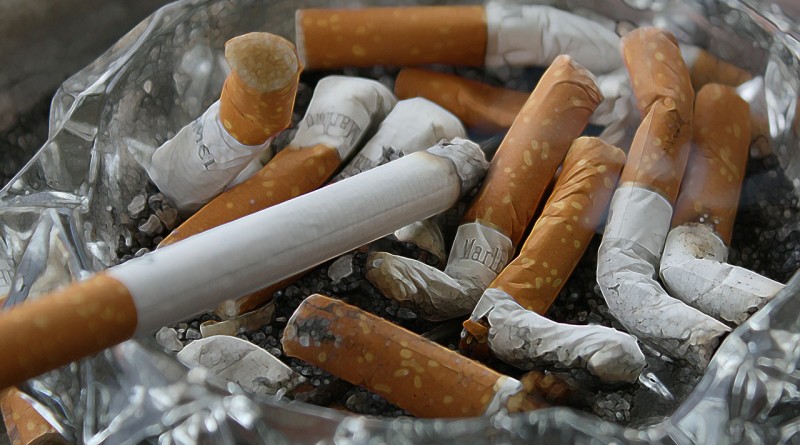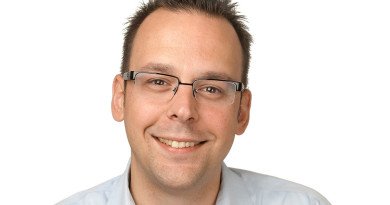Sometimes It’s Good to be a Quitter
If you haven’t already started [smoking], don’t start,” he said wearily. He was a military veteran and I was a medical student working in the hospital, years ago. He was one of my first patients but I can still hear the hoarseness, pain, and hope in his voice. He was in his early 40s and he had smoked one pack each day for 15 years. But, he was more than just a veteran – when his wife came to visit every evening, she was always flanked by their three young children. He was a young man with a young family. Alas, he would not live long enough to see any of his children finish grade school, passing away that same month I met him.
Tobacco addiction is the leading cause of preventable disease, disability, and death in Canada. While many are aware that it increases the risk of lung cancer, smoking also increases the risk of many other cancers – including oral, throat, stomach, and bladder – and decreases fertility. It is also the most important modifiable risk factor for cardiovascular disease. In 2014, 18.1% (more than one in six) of Canadians identified as smokers. Smoking contributes to over 37,000 deaths each year, of which over 10,000 are cardiovascular-related. Around the world, it kills almost 5 million people each year.
“Cardiovascular disease” is a general term referring to any diseases involving the heart and circulatory system, as well as their sequelae. The circulatory system is comprised of the vessels that carry blood throughout the body. Some examples of cardiovascular disease include heart attacks, heart failure, and strokes.
Unfortunately, the effects of smoking are not limited to the smoker themselves, but also extend to anyone exposed to the tobacco smoke or smoke particulate. Smoke particulate house with the smoker, even if they smoke outside. This secondhand smoke exposure can hurt the development and health of unborn babies, infants, children, adolescents, and other adults.
Smoke exposure early in life increases the risk of pregnancy complications, low birth weight, poor lung development, increased respiratory illness, and even sudden death in infants. At any age, it also decreases lung function and physical fitness and is a common cause of chronic cough. Additionally, smoking stains teeth and prematurely ages skin – this includes causing wrinkles.
Most people start smoking in their teens and are addicted by adulthood. Children and youth often start because they believe it makes them appear mature or they want to copy someone they admire. For some youth, it is a way to experiment with something forbidden. Adults tend to smoke because they enjoy the nicotine rush or the social connection smoking can facilitate. Others smoke because they feel stressed, they “just don’t feel right,” or they feel cravings to smoke. These may be symptoms of an ingrained habit to smoke or of the body’s dependence on nicotine.
Many of my patients have tried to reassure me that, “it’s okay, doc. I roll my own,” “it’s natural,” “I only smoke cigars,” or “I’ve been smoking since before you were born and I’m still not pushing up daisies.” Loose tobacco, shisha (smoked throug h a hookah/ water pipe), cigarettes, cigarillos, and cigars are but a few sources of tobacco smoke. In particular, smoking shisha attracts youth because of the plethora of flavours in which it is available – everything from apple and bubble gum to chocolate and coconut. This is particularly concerning because teens that have smoked hookah are more than eight times as likely as their peers to experiment with cigarettes.
One common misconception is that smoking shisha in a hookah is safer than other forms of smoking because the water filters out toxins. But, the opposite is actually true – hookah smoke contains the same nicotine, tar, heavy metals, and other cancer-causing toxins as cigarette smoke and it is at least as toxic as cigarette smoke. Furthermore, because it is less irritating, hookah smokers tend to inhale more frequently and deeply than cigarette smokers. In terms of the amount of smoke inhaled, one hookah session is equivalent to smoking 5-10 packs of cigarettes! Additionally, hookah smoking is touted as a safe and relatively inexpensive social activity. However, because the mouthpiece is shared when smoking in a group, there is a risk of transmitting infections, including herpes, hepatitis, and tuberculosis.
Stopping smoking is not easy for everyone and it may take more than one attempt to quit. The first step is in recognizing that you want to or need to stop. Some people are able to quit cold turkey, but many of us are aware of the struggle that friends, family, and even celebrities face when trying to stop smoking. Even Bollywood actor Shah Rukh Khan has been battling his nicotine addiction for years and Hollywood actor Brad Pitt has not been able to quit yet.
“There will never be a “perfect” time to quit smoking. A time when you don’t have any distractions or stress… If you had started today one year ago, this would not even be an issue for you today! Don’t waste another year!” – Mark Twain
But do not lose hope. Many resources are available to help smokers stop smoking. In 2014, smoking rates in Canada fell to their lowest level since 2001! Ideally, treatment is multifaceted, including counselling, behavioural therapy, and medication. Counselling and behavioural therapies provide smokers with support and practical skills, while medications can help to reduce the effects of nicotine withdrawal, cravings, and the urge to smoke. On their own, therapy and counselling are effective in increasing abstinence from smoking. However, the combination of therapy or counselling and medication is more effective than either treatment alone.
These are some great resources for starting the process:
• QuitNow (for phone, text, and online community support, along with detailed information about available resources): http://www.quitnow.ca/
• Dial 8-1-1 from anywhere in BC to contact a nurse who can direct you to resources in your area
• HealthLinkBC: http://www.healthlinkbc.ca/healthfeatures/smoking-cessation.html
• B.C. Smoking Cessation Program (free nicotine gum or patches throug h PharmaCare): http://www2.gov.bc.ca/gov/content/health/health-drug-coverage/pharmacare-for-bc-residents/what-we-cover/drug-coverage/bc-smoking-cessation-program
• Smokers’ Helpline (for phone and online community support, along with online self- help tools and workbooks): http://smokershelpline.ca/
• Your family doctor If someone close to you smokes, start the conversation. Share your concerns with them and support them in seeking help quitting. Ultimately, choosing to smoke is a personal decision. I strongly encourage you to make sure that it is an informed one.
References:
American Lung Association. An Emerging Deadly Trend: Waterpipe Tobacco Use. Washington: American Lung Association, 2007 [accessed 2015 August 8].
Centers for Disease Control and Prevention. ‘ CDC – Fact Sheet –
Hookahs – Smoking & Tobacco Use’. cdc.gov. N.p., 2015. Web. 8 Aug. 2015.
Health Canada. ‘Health In Canada | Statistics Canada’. Statcan.gc.ca. N.p., 2015. Web. 8 Aug. 2015.
Healthlinkbc.ca. ‘Quit Smoking – Healthlinkbc’. N.p., 2015. Web. 8 Aug. 2015.
Pipe, Andrew L. et al. ‘Smoking Cessation And The Cardiovascular Specialist: Canadian Cardiovascular Society Position Paper’. Canadian Journal of Cardiology 27.2 (2011): 132-137.
The Canadian Action Network for the Advancement, Dissemination and Adoption of Practice – informed Tobacco Treatment. ‘Canadian Smoking Cessation Clinical Practice Guideline.’ nicotinedependenceclinic.com. p.9, 2015. Web. 8 Aug. 2015.
By Dr. Raj Bhui




